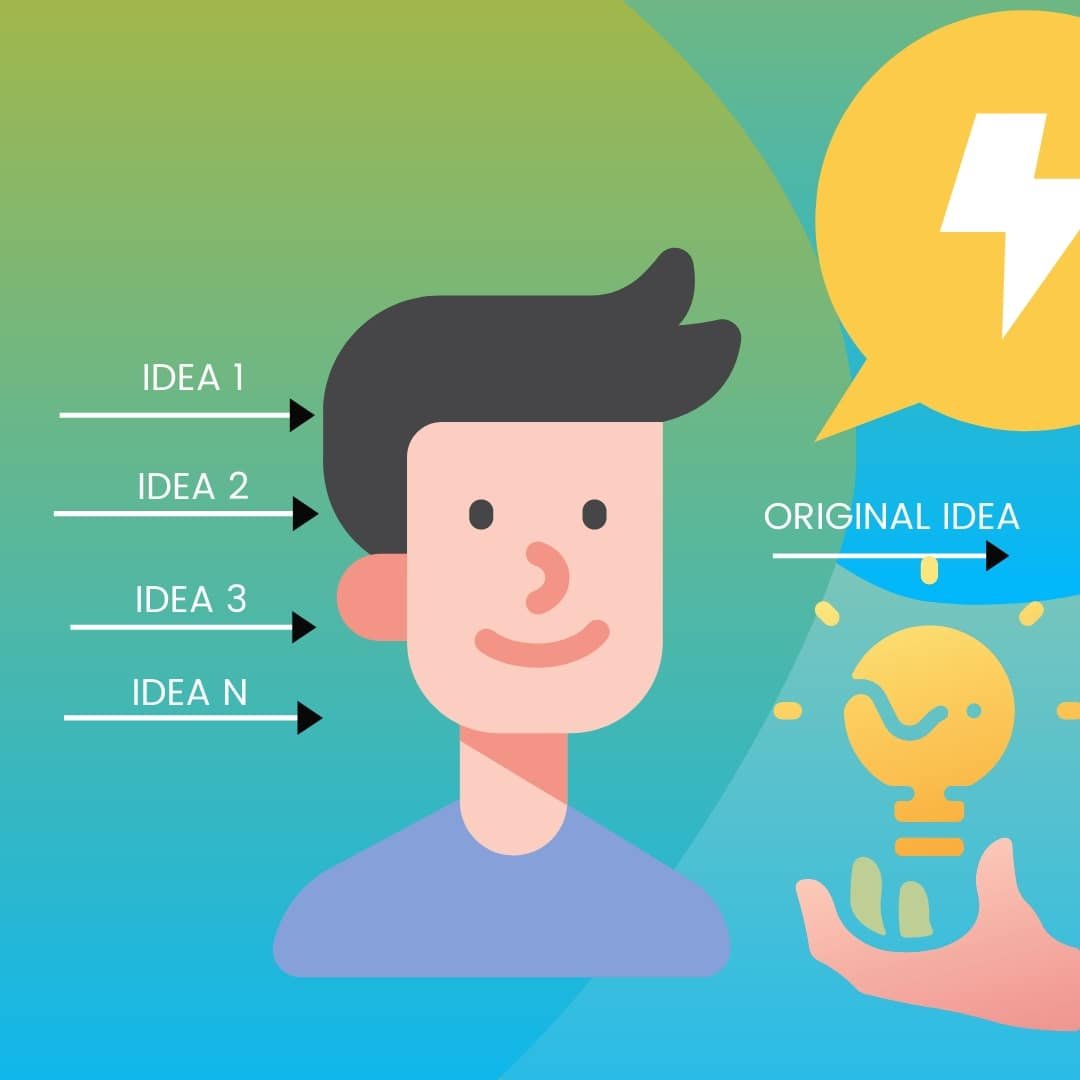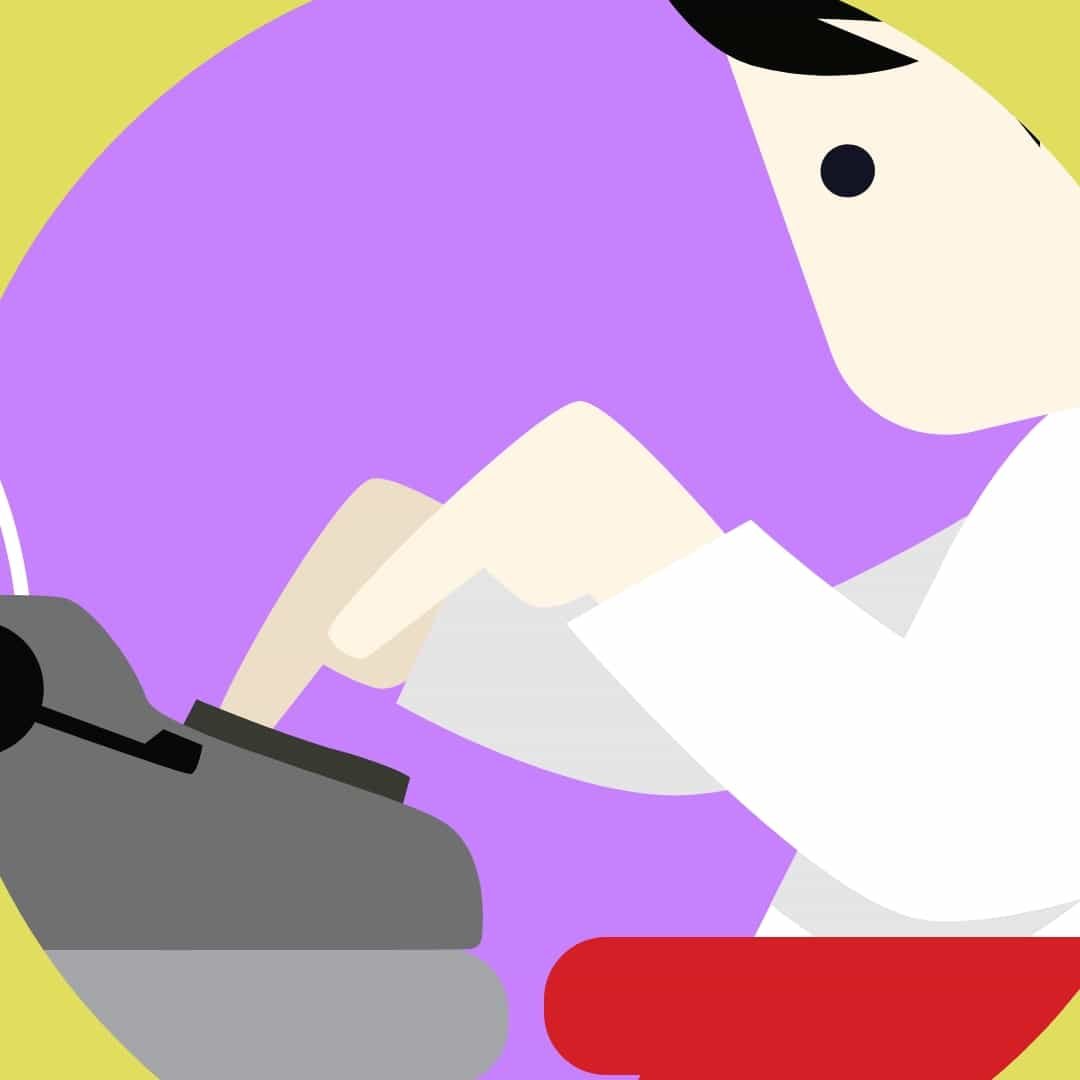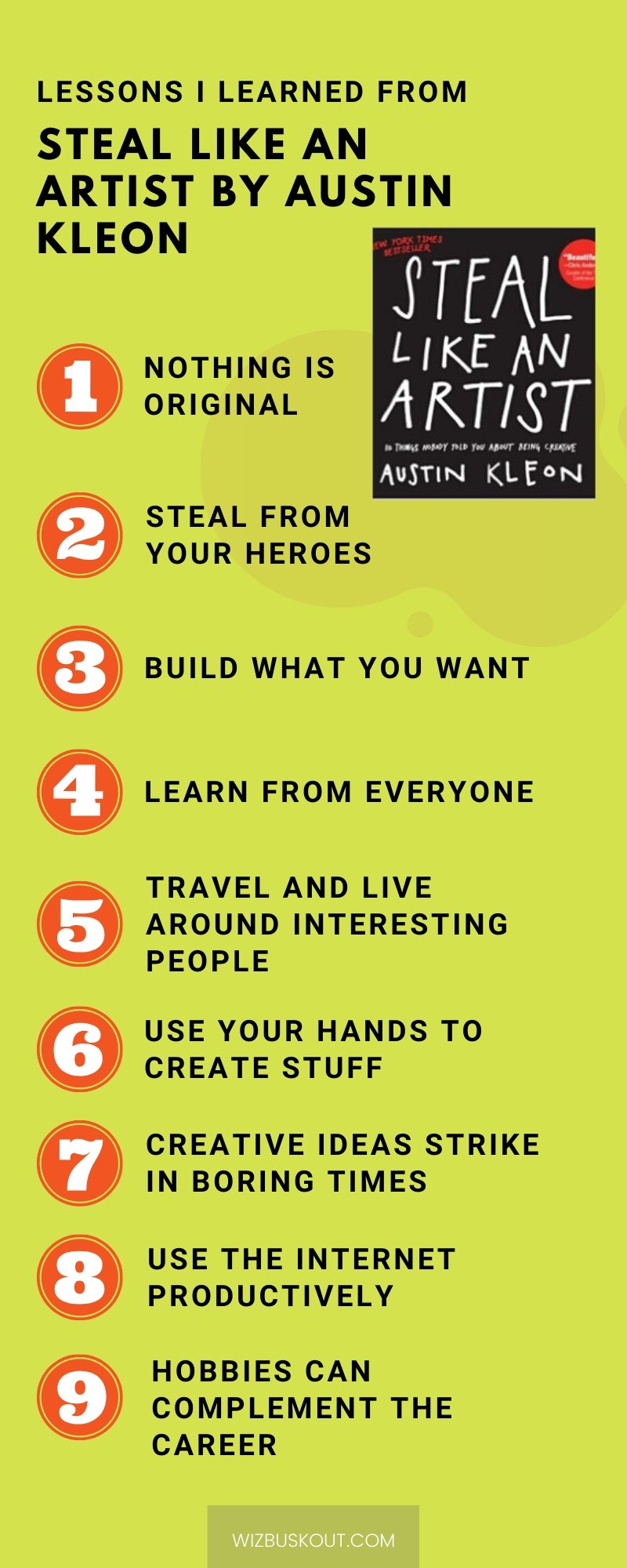Steal Like An Artist Summary by Austin Kleon busts the myth of original ideas. It teaches why nothing is unique and how everything is built on preexisting ideas. It also teaches how to copy and steal from your heroes and produce even better results.
Who should read steal like an artist summary?
[amazon box=”0761169253″ template=”horizontal”]
- Artists who often find themselves out of ideas.
- Creative writers who want to create original work without plagiarizing another author.
- Those who want to learn how to be creative and produce an endless stream of ideas.
Steal like an artist summary (PDF)
Have you ever wondered where creative people get their ideas from?
The thing is, they steal them.
Austin explains how you can copy your heroes by stealing from them in this book.
Today, in this Steal Like An Artist summary, I’ll share the lessons I have learned from it.
Without further ado, let’s dive right in.
1. Original ideas are a mashup of existing ideas
Many people wonder how great artists are able to consistently produce original work throughout their lives.
The thing is:
No one is born with great ideas magically installed in their head.
All great artists learn from other artists.
Let me give you an example:
Modern artists like Taylor Swift, Ed Sheeran, Eminem, etc., keep producing songs regularly that gain worldwide popularity.
It’s almost crazy how these artists come up with brilliant ideas repeatedly.
But the truth is:
Nothing is original.
What you see as original is a remix of already existing ideas.

There is nothing in this world that hasn’t been said before.
Every day, billions of people have thousands of thoughts popping up in their heads.
You cannot produce something out of thin air, no matter how hard you try.
Every piece of art you see is built over hundreds of preexisting ideas.
Look at this summary you are reading.
I am discussing the same thing that Austin talked about in the book.
However, my writing style and personal experiences – though limited – add a unique touch to this article and make it appear original.
Plagiarizing someone’s work is not admirable.
However, taking the work of thousands of people and building something ten times better is an entirely different matter.
Every article you read, every movie you watch, and every song you listen to is based on old ideas.
You won’t ever see anything utterly original in your life.
Things look original because we don’t know and remember everything.
And that’s why it looks original when the same thing is said from a different angle.
Though everything has already been said or done, we crave new.
Even we aren’t original.
We all are born out of a mashup of the genetics of our mommy, daddy, and ancestors.
Amateur artists plagiarize, but great artists steal from everyone.
This world is filled with great art waiting to be stolen.
Not every idea is worth stealing, though.
A great artist has an excellent observant eye that detects ideas worth stealing.
It’s better to steal uncontested ideas rather than let them stay hidden from the world.
A great artist is someone better at stealing great ideas.
What is originality? Undetected plagiarism.
William Ralph Inge
It’s disheartening to realize how everything is so unoriginal, isn’t it?
But it’s also what makes us and our ideas beautiful.
We are good at looking at the same old things like ideas, stars, sun, moon, etc., from different angles.
2. Don’t try to find your style at the beginning
Sometimes amateur artists try too hard to find their unique style of writing.
Austin says that instead of finding your unique style, they should let it come to them.
Start making stuff.
Once you start making stuff, you figure out what works well and what doesn’t.
People often keep waiting for ideal situations and never produce anything.
Even if you don’t have any style, just show up at your work and make stuff.
Here is how you can start if you don’t have a single clue:
Find and figure out people to steal from. These are the people who are already great at what you do.
Learn as much as you can from your heroes.
Copy them. Steal from them.
Here is a caveat, though:
Don’t rip off the work of a single person unless you want to be sued for plagiarism.
The idea is to rip off the work of hundreds of people and then build over that.
Don’t just steal the style, steal the thinking behind that style.
Austin Kleon
Try to internalize their way of looking at the world. Understand their way of thinking and mimic that.
The good thing is:
You can even learn from the people who aren’t even alive, but their work exists. Learn from their work.
The Beatles also started as a cover band. Modern rappers still learn from Eminem.
Even Kobe Bryant has learned by stealing the moves of his heroes. There are countless examples like these.
Even while writing this summary, I’m learning from Austin.
It’s good to learn from your heroes when you have no idea how to start building your own original work.
Copying is like reverse-engineering, says Austin.
Copy from one author, it’s plagiarism, but if you copy from many, it’s research.
Wilson Mizner
And even if you fail to copy your heroes, don’t be discouraged.
That’s where you will find your style.
3. Build what you want to exist in the world

Young artists often find themselves out of ideas.
If you ever run into a situation like this, you can follow this simple advice:
Build what you like.
Try to find the gap in the work of your heroes.
Or create something with a different angle.
In short:
Do the work you want to see done.
Austin Kleon
4. Work with your head but don’t forget to work with your hands

Everything these days is accomplished with the help of digital or electronic devices.
Look at yourself. You are also reading this summary through a digital device.
Aren’t you?
These devices make an artist sit in front of a flat glowing screen.
You don’t do much on these devices other than hitting a few keys on the keyboard and moving your hand a bit with your mouse.
Digital devices rob us of the feeling that we are creating stuff.
Austin suggests that instead of doing all the work on digital devices, one should use pen and paper.
One should also use his hands to make stuff.
Especially for writers, these devices try to bring out perfectionists within them.
That urge to write and edit simultaneously is so irresistible that they find themselves hitting the backspace or delete key repeatedly. This limits their creativity.
Austin says that he works with two workstations. One is digital, while the other is analog. This gives him a sense that he is making something with his body and not just his head.
But I would say that there isn’t any hard and fast rule to this.
I rarely use pen and paper, and it works fine for me.
The point is:
It’s good to use traditional methods sometimes.
5. Hobbies are as important as your career
Hobbies are often forgotten under the pressure of career work.
People feel that their hobbies don’t contribute to their work and therefore they are a waste of time.
But the reality is entirely different.
Your hobbies and side projects contribute to the work you do.
You don’t have to throw away your passion and interest to do only one thing.
Keep your passions alive.
If you are a writer, you don’t have to leave your passion for creating music.
The benefit of keeping hobbies is that you can switch them with your job if you get bored.
Your side projects complement your life and help you do even better.
In my case, my guitar playing helped me build consistency over time, and that quality spilled over to my writing.
Learnings from the hobbies often transfer themselves to your job, thus improving results quality.

Colleges are fun.
Professors are paid to share ideas with you. You get to share your thoughts with other students.
Everybody is happy in such an artificial setting (classrooms).
Don’t take that audience for granted.
If you’re a student, you pay the college fees to get that kind of environment.
But when it comes to the real world, nobody cares about you.
People are busy with their jobs.
They don’t have time to read your blog articles. They don’t have time to listen to your story. They are busy with theirs.
This doesn’t mean that they are harsh. It’s just life.
It’s not that people are mean or cruel, they’re just busy.
Steven Pressfield
This is a good thing for artists who aren’t that popular.
There aren’t many eyeballs staring at their work. They can experiment and perfect their craft until they get viral.
When you are super popular, you have to deal with many expectations. You lose the freedom that young artists get when they are just starting.
Austin shares the secret formula of getting known:
Do good work and share it with people.
Austin Kleon
By good work, Austin means that you give your secrets away.
When you share your secrets away, people love it and reward you.
Create accounts on different social media channels. Make your website. Learn Digital Marketing. Learn a bit of coding.
Learn what is necessary and share your work with the people you think would be interested in it.
Invite them to follow you on your creative journey.
7. Travel and live around interesting people

Writers often hit mental blocks. Their brains just stop producing ideas.
When that happens, you can leave your home and travel.
Traveling refreshes your perception of things.
When you travel and meet new and exciting people, you learn new things.
And when you return home, everything remains the same, but you start to look at things from a different perspective.
It’s always better to live around people who have different interests.
You don’t have to be with the people who do the same things you do.
8. The Internet has made this world a small town

Today, everything is connected to the internet.
People love being social by tweeting, posting, sharing, and doing lots of crazy stuff on the internet.
Geographical barriers don’t exist anymore.
For every interest, there is a community.
But not everybody will like you. You will have haters. You will have enemies.
You don’t have any control once you post something on the internet.
People will misinterpret you. People will react to it.
Austin says that the best way to deal with your enemies on the internet is to ignore them.
Instead of wasting your time on haters, you should stand next to talented individuals.
People will judge you on the internet based on who you surround yourself with.
It’s essential to make friends with people on the internet.
Don’t be mean to people. Say nice things about them.
Add value to their lives.
Instead of picking fights on Twitter and getting angry, try to channel your anger and do your work.
Stop complaining. Build something useful instead.
There are many productive things you can do on the internet, like writing a blog post about someone you admire or writing an article to bring change in people’s lives.
There is so much you could do with the internet.
Be productive.
9. Embrace the boring times

Boring times are as important as fun times.
If you ask creative people, they will tell you that their most innovative ideas popped up in their heads while they were bored.
Spend some time in solitude.
Let your brain wander. Be bored.
Try not to constraint your brain.
10. What you Omit Makes what you build Interesting
It’s often what an artist chooses to leave out that makes the art interesting.
Austin Kleon
Creativity isn’t always about what you put into your work.
There are many possibilities and ideas, especially when we are overwhelmed with so much information these days.
Choosing the right ideas is becoming harder.
But the tiny details that you leave while doing creative work often determine the uniqueness of your work and make it interesting.
Just look at this summary that you’re reading.
I could go crazy and write a 10k word summary. But I didn’t.
I limited the ideas and kept only those that had weight.
Subtraction is what impacts more on creative work.
The key takeaways from “Steal Like An Artist”
Let’s wrap up the key learnings from this book:
- An original idea is a mixture of preexisting concepts.
- Steal as much as you can from the people you admire.
- Steal from different people, not one.
- Keep doing what you love.
- Travel sometimes to shift your perspective.
- Do physical tasks to get the feel of doing stuff.
- Use the internet wisely. Do productive things online.
- Be a creator and learn to produce shit.
Steal like an artist summary infographic

Steal like an artist review
[amazon box=”0761169253″ template=”horizontal”]
This book was a good read. It took me less than two hours to finish.
Austin Kleon is creative with his drawings.
I liked Austin’s way of keeping everything simple in this book.
It looks like this book is a compilation of many blog posts.
This book is definitely worth stealing.
I didn’t find anything wrong with this book.
Now it’s your turn
I hope you enjoyed reading Steal Like An Artist Summary.
Now you tell me:
Do you think it’s good to rip off the work of hundreds of people and then build over it?
Do you agree with the idea that originality is undetected plagiarism?
Tell me in the comments below.
If you liked reading Steal Like An Artist Summary, please share this by clicking one of the share buttons.
Want to consume more insightful, power-packed content like this in the future?
Subscribe to the weekly email newsletter.
Subscribe to YouTube channel for animated video books.
Try Amazon’s Audible 30-days Free Trial and Get 2 Audiobooks for free.

Maintain the excellent job !! Lovin’ it!
Thanks Brianbub.